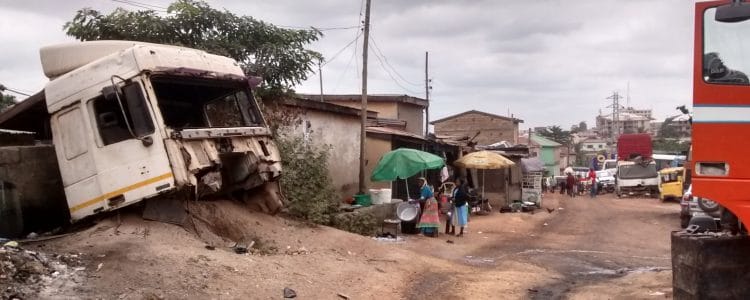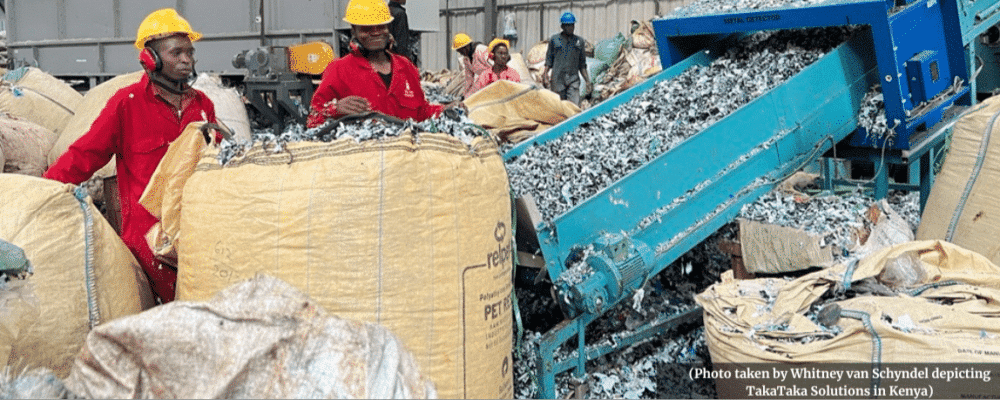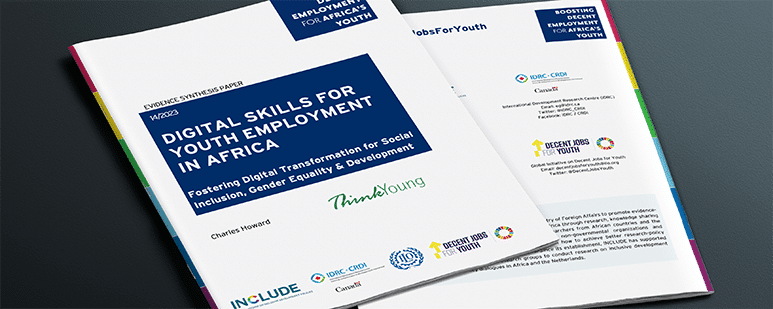
Rafael Verbuyst is doing fieldwork in Suame Magazine (Kumasi, Ghana) within the context of the INCLUDE research project ‘Increasing political leverage for informal and formal workers’ organizations for inclusive development’. Suame Magazine is an industrialized area of Kumasi with many workshops for metal engineering and vehicle repair. Rafael wants to find out how informal workers and informal workers’ organizations are exercising political leverage to procure help in meeting their challenges in a rapidly changing environment. His research will focus on land issues and the strategies to cope with new car technologies, as the workers themselves identify these as the most pressing issues. Rafael writes a blog for INCLUDE to share his stories from the field.
Did you ever wonder where cars go when they die? One of those places is Suame Magazine, an industrial cluster of about 200,000 informal workers in Kumasi, Ghana, which derives its name from a colonial era weapons magazine located in the suburb of Suame. Ever since its creation in the 1930s vehicles of all sorts have been arriving here after their (mostly European) owners have discarded them and put them on containers to be shipped abroad. Once inside Suame Magazine, the vehicles are fused with other ones, parts are added to make them running again, or the vehicles are dissected altogether for scrap metal and second hand parts to be sold by spare part dealers. Suame Magazine rose to prominence especially in the 1970s and 80s when restrictions on imports of vehicles and spare parts stimulated a market for home-grown car parts. As spare parts dealers, mechanics, fitters, sprayers, etc. are all located inside Suame Magazine, efficient subcontracting enabled the local artisans to compete favourably with private garages.

During a typical visit to the cluster, the various artisans of Suame Magazine manoeuvre the labyrinth of shops and garages, deliver you the second-hand or home-made part you are looking for and install it in your car. You might notice the odd amount of hammering and duct tape involved but the artisans will not cease to work on it until the issue is solved (for the time being). Needless to say, you will end up paying much less than with a private garage for these services. The cluster is a regional powerhouse with about one third of the clientele coming from neighbouring Togo and Burkina Faso. Indeed, visitors to West Africa are likely to have come across a taxi-bus or truck with German or Dutch phrases still visible on the body. The artisans of Suame Magazine have been happily servicing its international visitors for decades and the Suame Magazine Industrial Development Organization (SMIDO) – a local organization set up to promote donor investment in Suame Magazine – proudly calls it the ‘heartland of African ingenuity’.
However, the famous cluster has been in decline for more than a decade with fewer and fewer people coming to Suame Magazine for spare parts and repairs. The limited theoretical education of mechanics in Suame Magazine is proving inadequate to keep up with the new car technology (i.e. electronics). The old tradition of sending illiterate people to Suame Magazine to become car mechanics fails to provide the type of trained professionals needed to cope with the rapid influx of vehicles equipped with electronics. A different type of schooling and demographic pool is required to ensure the sustainability of Suame Magazine. Dealing with electronic cars also requires the use of different and more expensive tools. A diagnostic machine is required to detect error codes and many problems can only be fixed through reprogramming. The price of a diagnostic machine varies greatly but most mechanics in Suame Magazine do not have the know-how or capital to purchase one. Those who do own a diagnostic machine sometimes abuse this situation by renting out the machine for exuberant rates.

In addition to the problems caused by the arrival of new car technology, the area is seriously overcrowded as more and more people came to set up shop in Suame Magazine over the years and endlessly parcelled plots of land. This leads to a wide range of complications such as illegal occupations, evictions, poor tax collection and limitations on business expansion. The overpopulation of Suame Magazine also gave rise to traffic jams, environmental degradation, power shortages and lack of sanitation and infrastructure. Moreover, artisans in Suame Magazine have complained that the economic decline is causing mechanics to cheat customers or flood the market with cheap fake spare parts. The past decade of economic hardship has also led some artisans to produce cheap firearms, contributing to the city’s rising crime figures. While hundreds of cars still pass through the cluster on a daily basis, the abovementioned developments signal the rapid decline of the once vibrant Suame Magazine. Some have projected a total collapse in about ten years’ time. In the next blog post I will discuss in more detail how informal workers’ organizations deal with their challenges.










